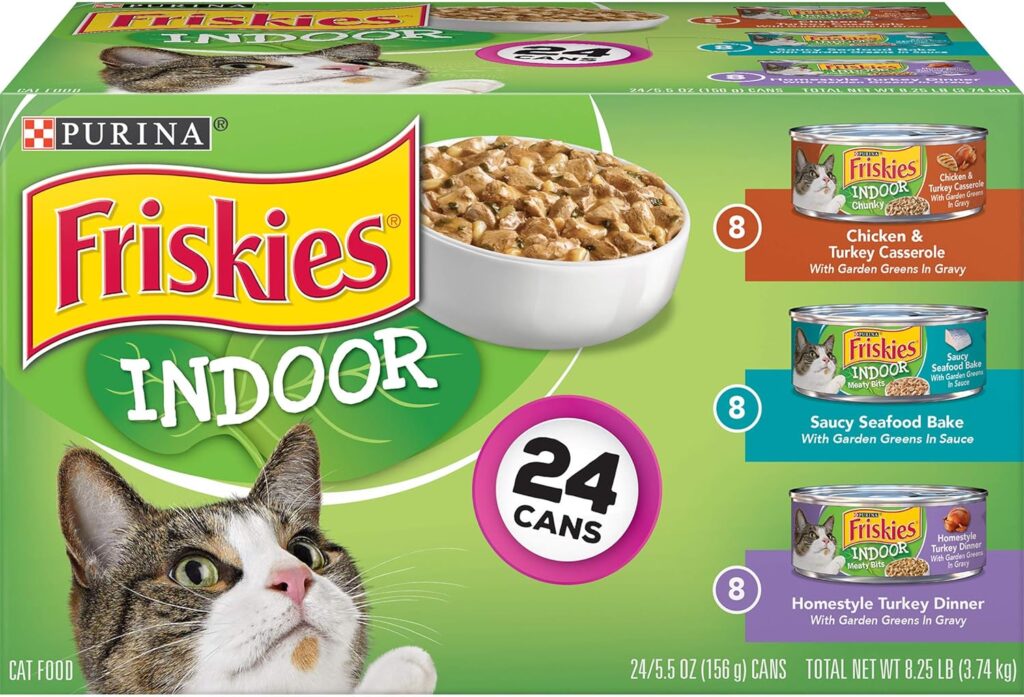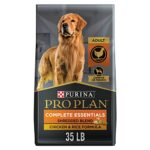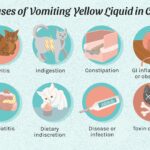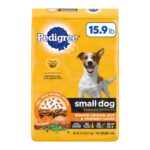You should not leave wet cat food out for more than 2 hours. Bacteria can grow rapidly, making it unsafe for your cat.
Wet cat food is a popular choice for many pet owners due to its high moisture content and palatability. Cats often prefer the taste and texture of wet food over dry kibble. It also provides essential hydration, which is crucial for a cat’s overall health.
However, wet cat food can spoil quickly when left out, especially in warm temperatures. Ensuring you store it properly and adhere to safe feeding practices will keep your cat healthy and prevent any potential foodborne illnesses. Always monitor how long food has been exposed to room temperature to maintain its freshness and safety.

Credit: www.youtube.com
Introduction To Wet Cat Food
Cats love wet food. It’s tasty and nutritious. Wet cat food is usually meat-based and comes in cans or pouches. It provides a balanced diet for your furry friend. But how long can you leave wet cat food out? Let’s explore this topic.
Benefits Of Wet Food For Cats
- Hydration: Wet food has high water content. This helps keep cats hydrated.
- Nutrition: Wet food is rich in protein and essential nutrients.
- Palatability: Cats find wet food tastier than dry food.
- Weight Management: Wet food can help control a cat’s weight.
Common Misconceptions
- Wet food causes dental issues: This is not true. Wet food does not cause more dental problems than dry food.
- Wet food is more expensive: Wet food can be cost-effective. Especially when considering its benefits.
- Wet food spoils quickly: Wet food can stay fresh for hours if handled properly.
The Shelf Life Of Wet Cat Food
Understanding the shelf life of wet cat food is crucial for your cat’s health. Wet cat food offers many benefits but has a limited shelf life. Knowing how long you can leave it out will help keep your cat safe.
Unopened Cans And Pouches
Unopened cans and pouches of wet cat food have a long shelf life. They can last up to two years if stored properly. Always check the expiration date on the packaging before feeding your cat.
Store unopened cans and pouches in a cool, dry place. Avoid places with direct sunlight or high temperatures. This will ensure the food stays fresh for as long as possible.
| Storage Condition | Shelf Life |
|---|---|
| Unopened, cool and dry | Up to 2 years |
| Unopened, warm and humid | Less than 1 year |
After Opening: What To Know
Once opened, wet cat food must be handled with care. Opened cans or pouches should be refrigerated. Use the food within 24 to 48 hours for the best quality.
- Transfer the food to an airtight container if possible.
- Label the container with the date you opened it.
- Keep the food in the refrigerator at a temperature below 40°F.
Never leave wet cat food out for more than 4 hours. Bacteria can grow quickly, making the food unsafe. Always discard any leftover food that has been out longer than this.
Factors Affecting Wet Food Safety
Wet cat food can spoil quickly if left out for too long. Understanding the factors affecting wet food safety helps keep your cat healthy. Key factors include temperature and environmental contaminants.
Temperature Influence
Temperature greatly impacts wet food safety. Warm temperatures speed up bacterial growth.
Room temperature: Wet food should not stay out longer than 2 hours.
Hot weather: Reduce this time to 1 hour. High temperatures increase spoilage risk.
Refrigeration: Store unused wet food in the refrigerator. This slows bacterial growth.
| Temperature | Safe Time |
|---|---|
| Room Temperature | 2 hours |
| Hot Weather | 1 hour |
| Refrigerated | 24-48 hours |
Environmental Contaminants
Environmental contaminants also affect wet food safety. Keep food away from dirt, dust, and pests.
Clean feeding area: Ensure your cat’s feeding area is clean. This reduces contamination risk.
- Wash bowls daily.
- Use stainless steel bowls. These are easier to clean.
Cover unused food: Use airtight containers. This keeps food fresh and contaminant-free.
Store properly: Always store wet food in a cool, dry place.
Keeping these factors in mind helps ensure your cat’s food remains safe.

Credit: www.pinterest.com
Recognizing Spoilage In Wet Cat Food
Understanding the signs of spoilage in wet cat food is crucial. Spoiled cat food can make your pet sick. Knowing what to look for ensures your cat’s health and safety.
Visual Signs
Inspect the wet cat food for mold. Mold appears as green, blue, or white spots. Check for any discoloration in the food. Fresh cat food should have a consistent color. If you see any unusual colors, it’s time to throw it away.
Look for changes in texture. Spoiled food may appear watery or slimy. Healthy wet cat food should be firm and moist, not liquid or mushy.
Odor And Texture Changes
Smell the cat food before serving it. Spoiled cat food will have a sour or rotten smell. Fresh wet cat food has a meaty, appealing aroma.
Feel the texture of the cat food. Fresh food feels smooth and moist. If it feels sticky or slimy, it has gone bad.
| Signs of Spoilage | Description |
|---|---|
| Visual Signs | Mold, unusual colors, watery or slimy texture |
| Odor | Sour or rotten smell |
| Texture | Sticky or slimy feel |
Safe Handling Practices
Proper safe handling practices for wet cat food are crucial. These practices ensure your cat stays healthy and enjoys fresh meals. Below, find essential tips on opening, storing, and handling wet cat food.
Proper Opening Techniques
Use a clean, dry can opener to open the can. This prevents contamination. Avoid using dirty or rusty tools. Wipe the can’s top before opening. This removes dust or debris. After opening, do not leave food exposed to air.
Hygienic Storage Solutions
Store unused wet cat food in an airtight container. Place the container in the refrigerator. This keeps the food fresh and safe. Label the container with the opening date. This helps you track freshness.
Use the table below to guide your storage practices:
| Storage Location | Maximum Storage Time |
|---|---|
| Refrigerator | Up to 48 hours |
| Room Temperature | 2 hours |
Discard any food left out for more than 2 hours. Do not mix old and new food. Always wash food bowls after each use.
- Use airtight containers for storage.
- Label containers with the opening date.
- Store in the refrigerator for up to 48 hours.
- Discard food left out for over 2 hours.
By following these safe handling practices, you ensure your cat’s food remains fresh and safe.
The Four-hour Rule
Leaving wet cat food out too long can be harmful. The Four-Hour Rule helps keep your cat safe. This guideline helps maintain the quality of the food. Let’s explore the origins and exceptions of this rule.
Origin And Rationale
The Four-Hour Rule comes from food safety guidelines. Wet cat food has moisture that promotes bacterial growth. After four hours at room temperature, bacteria multiply quickly. This can make your cat sick. Keeping track of time helps keep the food fresh.
Exceptions To Consider
There are some exceptions to the Four-Hour Rule. If the room is cooler than 70°F, the food may last longer. Use a table for quick reference:
| Temperature | Safe Time |
|---|---|
| Below 70°F | 5 hours |
| Above 70°F | 4 hours |
If the food is in direct sunlight, it spoils faster. Always check the food’s appearance and smell. If in doubt, throw it out. Your cat’s health is most important.
Health Risks Of Stale Food
Leaving wet cat food out for too long can pose serious health risks. Stale food can become a breeding ground for bacteria, which can harm your cat. This section explores the dangers of bacterial growth and the impact on your cat’s health.
Bacterial Growth Dangers
Wet cat food is moist and nutritious, perfect for bacteria. When left out, bacteria multiply quickly. This can lead to contamination of the food.
- Salmonella: A common bacteria found in stale food. It causes severe illness.
- E. coli: Another dangerous bacteria. It can lead to stomach issues.
- Listeria: Can cause severe infections. It is found in spoiled food.
Bacterial contamination can make your cat very sick. Always remove wet food after 2 hours.
Impact On Cat’s Health
Feeding your cat stale food can lead to multiple health problems. Consuming contaminated food can cause:
- Gastrointestinal issues: Vomiting and diarrhea are common symptoms.
- Food poisoning: Severe cases can require veterinary care.
- Weakened immune system: Continuous exposure to bacteria weakens their health.
Always ensure your cat’s food is fresh. Replace uneaten food after two hours to avoid health risks.
Feeding Guidelines For Cat Owners
Ensuring your cat eats healthy is important. Wet cat food is a great option. It provides hydration and nutrients. But you must follow some guidelines.
Portion Sizes
Portion sizes depend on your cat’s age, weight, and activity level.
- Kittens: Feed small amounts, 3-4 times a day.
- Adult cats: Feed 2-3 times a day.
- Senior cats: Consult a vet for specific needs.
Check the food label for serving sizes. Adjust based on your cat’s appetite and weight.
Scheduling Meals
Feed your cat at the same times each day. Consistency helps with digestion.
Here is a sample feeding schedule:
| Time | Meal |
|---|---|
| 7:00 AM | Breakfast |
| 12:00 PM | Lunch |
| 6:00 PM | Dinner |
Always provide fresh water. Replace wet food after 2 hours to avoid spoilage.
Alternatives To Leaving Food Out
Cats are picky eaters. Leaving wet cat food out too long can cause health issues. Instead of leaving food out, consider these alternatives to keep your cat healthy and happy.
Automatic Feeders
Automatic feeders can help manage your cat’s feeding schedule. These devices dispense the right amount of food at set times. They keep food fresh and reduce waste. Some models have cooling features to keep wet food fresh longer. Here’s a table comparing two popular automatic feeders:
| Feature | Feeder A | Feeder B |
|---|---|---|
| Capacity | 2 meals | 5 meals |
| Cooling System | Yes | No |
| Programmable | Yes | Yes |
Creative Feeding Strategies
Get creative to keep your cat engaged and healthy. Try dividing the food into smaller portions. Place them in different spots around the house. This encourages your cat to explore and stay active.
Use puzzle feeders to make mealtime fun. Puzzle feeders challenge your cat to work for their food. This can help slow down eating and improve digestion.
Consider the following creative feeding strategies:
- Multiple Small Meals: Offer several small meals throughout the day.
- Food Puzzles: Use puzzle feeders to stimulate your cat’s mind.
- Hide and Seek: Hide small portions of food around the house.
These strategies can make a big difference in your cat’s health and happiness.

Credit: www.youtube.com
When To Discard Wet Food
Knowing when to discard wet food is essential for your cat’s health. Wet cat food can spoil quickly and cause illness. This section explains when to throw out wet food.
Expiration Dates
Check the expiration date on the can or pouch. Do not use expired food. It can be harmful to your cat.
| Time Since Purchase | Action |
|---|---|
| Before Expiration Date | Safe to use |
| After Expiration Date | Discard immediately |
Post-opening Lifespan
Once opened, wet cat food needs special care. The post-opening lifespan is short.
- Opened food in a bowl: Discard after 4 hours.
- Opened food in the fridge: Use within 24-48 hours.
Always store opened cans in the fridge. Use a lid or plastic wrap to cover the food. This keeps it fresh longer.
The Role Of Cat Behavior
Understanding your cat’s behavior helps determine how long to leave out wet cat food. Cats are unique in their habits and preferences. This affects their eating patterns and food freshness requirements.
Eating Habits
Cats often eat small meals throughout the day. They typically don’t consume all their food at once. This grazing behavior means wet cat food might sit out longer. Cats also have a keen sense of smell. They can detect changes in food quality quickly. If the food smells off, they may refuse to eat it.
Preference For Freshness
Cats prefer fresh food. They are less likely to eat food that has been left out too long. Freshness affects the taste and smell of the food. As wet food sits out, it dries and loses its appeal. Keeping food fresh is essential to ensure your cat eats properly.
Interactive Feeding Options
Interactive feeding options can make mealtime fun for your cat. They also help keep wet cat food fresh longer. These methods engage your cat mentally and physically. Explore these exciting ways to feed your cat.
Feeding Toys
Feeding toys can turn mealtime into playtime. They keep your cat busy and curious. You can find various types of feeding toys. Some toys dispense food as your cat plays with them. This helps keep the food fresh and engaging.
- Ball Feeders: These are balls filled with food. Your cat rolls the ball to get the food out.
- Maze Feeders: These have a maze inside where the food is placed. Your cat has to work to get the food out.
Puzzle Feeders
Puzzle feeders challenge your cat’s mind. They make eating a fun and rewarding task. Puzzle feeders come in many designs. They can be as simple or complex as you like.
- Sliding Puzzles: These have panels that slide to reveal food. Your cat has to move the panels to get to the food.
- Treat Puzzles: These are toys with hidden compartments. Your cat has to figure out how to open the compartments to get the food.
Both feeding toys and puzzle feeders can extend the time wet cat food stays fresh. They also provide mental and physical exercise for your cat. Try these interactive feeding options to make mealtime more exciting.
Myths About Wet Food And Safety
Many cat owners are confused about wet cat food safety. Myths often lead to mistakes. Understanding the truth is crucial for your cat’s health.
Debunking Common Myths
There are several myths about wet cat food. Some think it’s unsafe to leave out. Others believe it spoils quickly. Let’s debunk these myths.
Myth 1: Wet cat food spoils in one hour.
Truth: Wet food can stay out for up to 4 hours.
Myth 2: Refrigerating wet food causes it to lose nutrients.
Truth: Refrigeration keeps food fresh and nutrient-rich.
Myth 3: Wet cat food causes dental issues.
Truth: Proper dental care can prevent issues from any food type.
Trusted Sources
Always rely on trusted sources for information. Veterinarians and pet nutrition experts offer reliable advice. Here are some trusted sources:
- Veterinary clinics
- Pet nutritionists
- Reputable pet food brands
These sources provide accurate information on cat food safety.
Expert Advice On Cat Nutrition
Understanding how long you can leave wet cat food out is crucial. Proper nutrition is vital for your cat’s health. Expert advice can help you make informed decisions. This section provides insights from veterinarians and nutritionists.
Veterinarian Recommendations
Veterinarians suggest not leaving wet cat food out for more than 4 hours. Bacteria can grow rapidly in wet food, making it unsafe. Always check the food’s temperature and appearance.
Keep the feeding area clean. Use shallow bowls for easy access. Replace uneaten food promptly to avoid spoilage.
Nutritional Balance
A balanced diet is essential for your cat. Wet food provides hydration and nutrition. Ensure it contains the right mix of proteins, fats, and vitamins.
Refer to the table below for nutritional requirements:
| Nutrient | Daily Requirement |
|---|---|
| Protein | 35-45% |
| Fat | 15-20% |
| Vitamins | Small amounts |
Check the label for nutrient content. Consult your vet for personalized advice. Monitor your cat’s weight and health regularly.
Summary And Best Practices
Leaving wet cat food out for too long can be harmful. It’s crucial for cat owners to know the best practices. This ensures your cat stays healthy and safe. Below, you’ll find a quick recap and essential tips.
Quick Recap
Wet cat food can spoil if left out too long. Bacteria grow quickly in moist environments. This can make your cat sick. Here are the key points:
- Room Temperature: Wet food should not sit out for more than 2 hours.
- Refrigeration: Store unused portions in the fridge, covered.
- Serving Size: Serve only what your cat will eat in one sitting.
Final Tips For Cat Owners
Follow these best practices to keep your cat healthy:
- Clean Bowls: Wash your cat’s food bowl daily with soap and water.
- Check Food: Always check the expiration date before serving.
- Storage: Use airtight containers to store wet cat food in the fridge.
By following these tips, you’ll ensure your cat enjoys fresh and safe meals. Proper handling of wet cat food is essential for your cat’s well-being.
Frequently Asked Questions
How Long Can Cat Wet Food Sit Out?
Cat wet food can sit out for 1-2 hours. After that, bacteria grow and spoil the food.
How Long Does Wet Cat Food Take To Spoil?
Wet cat food spoils in 4 hours at room temperature. Refrigerate unused portions immediately to keep it fresh.
Is It Okay To Leave Cat Food Out All Day?
Yes, it’s okay to leave dry cat food out all day. Wet food should be removed after a few hours to prevent spoilage.
Can I Give My Cat Leftover Wet Food?
Yes, you can give your cat leftover wet food. Store it in the refrigerator and use within 24 hours. Always check for spoilage before serving.
Conclusion
To keep your cat healthy, don’t leave wet cat food out for too long. Aim for two hours maximum. Always store leftovers in the refrigerator. Regularly clean feeding dishes to prevent bacteria buildup. Your cat deserves fresh, safe food every meal.
Following these tips ensures your furry friend stays happy and healthy.







